The Taliban claims opium poppy cultivation was stopped and the flow of illegal drugs halted when it was last in power in Afghanistan
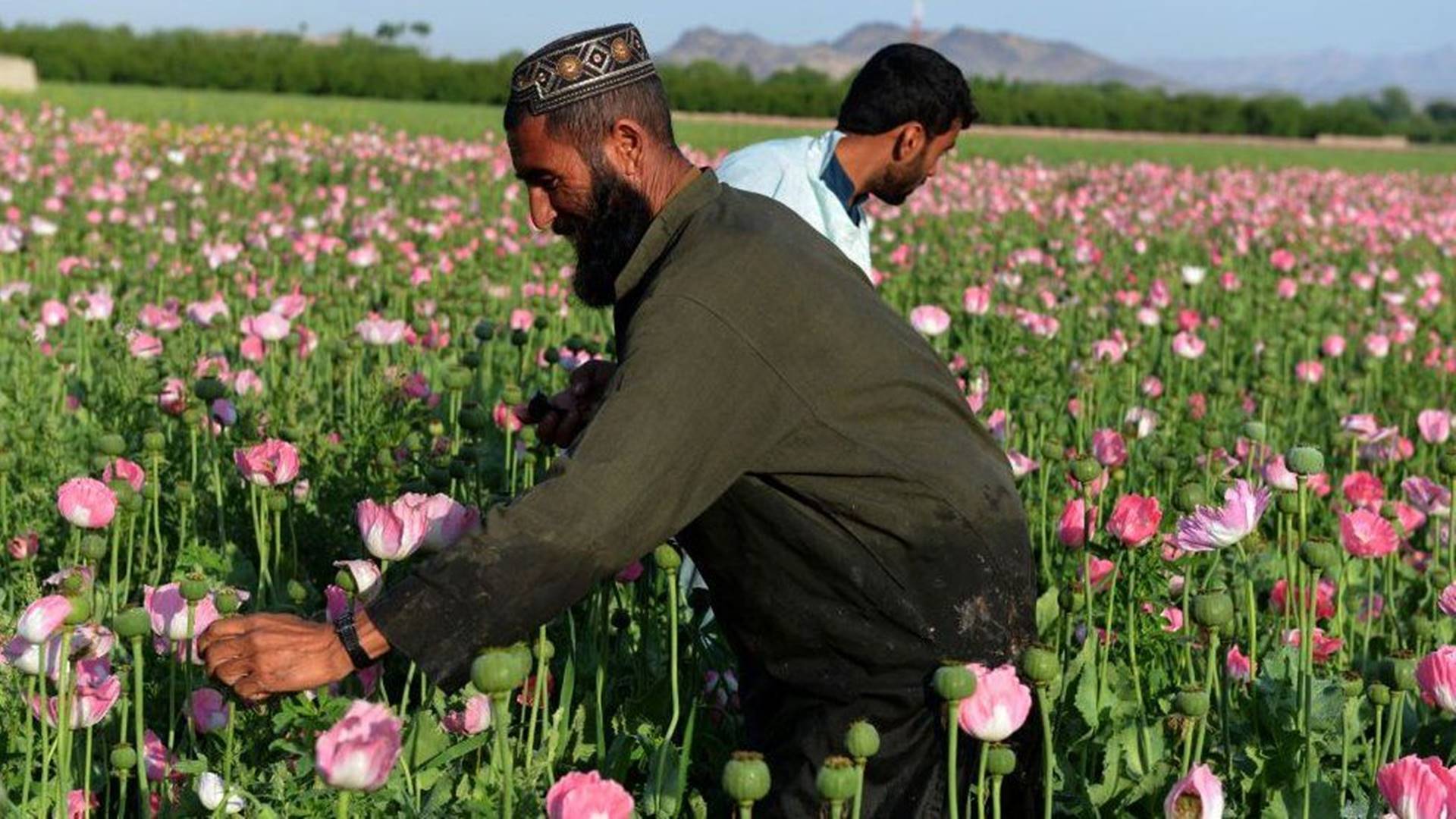
But although there was a sharp drop in 2001 – when it was last in control – opium poppy cultivation in Taliban-held areas has risen in subsequent years.
Hezbollah in League with Latin American Drug Gangs
How much opium is produced in Afghanistan?
Opium poppy plants can be refined to form the basis for several highly addictive drugs, including heroin.
Afghanistan is the world’s largest producer of opium, according to the United Nations Office on Drugs and Crime (UNODC).
Its opium harvest accounts for more than 80% of the world’s supply.
In 2018 the UNODC estimated opium production contributed up to 11% of the country’s economy.
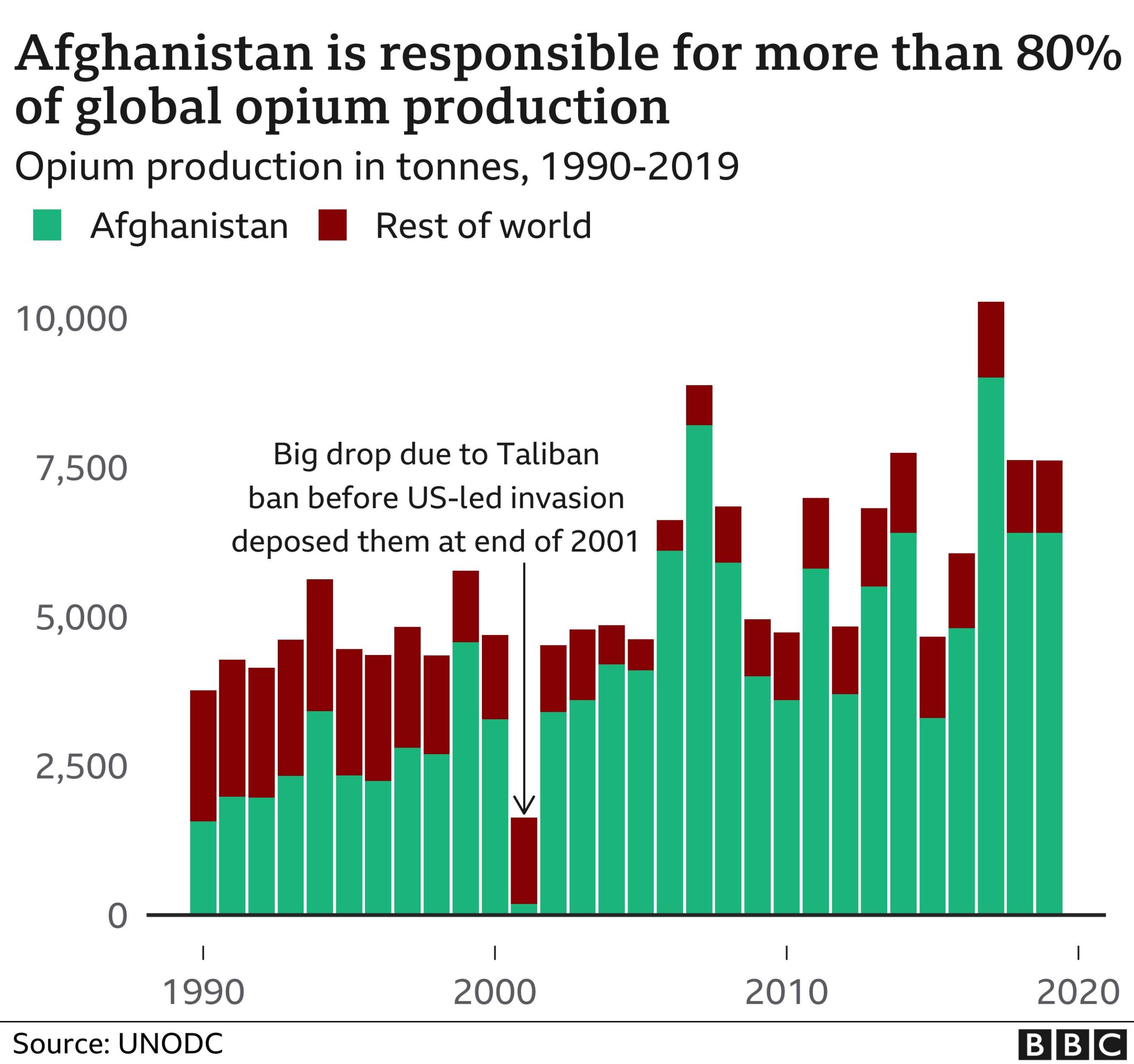
Netherlands, Belgium, Switzerland tops in drug use in Europe
What has the Taliban said it will do about opium?
After the Taliban took control of Afghanistan, spokesman Zabihullah Mujahid said: “When we were in power before there was no production of drugs.”
He said “we will bring opium cultivation to zero again” and that there would be no smuggling.
GROUP AMERICA: A US-SERBIAN DRUG GANG WITH FRIENDS IN THE SHADOWS
What is the Taliban’s record?
At first, opium poppy cultivation rose substantially under Taliban rule – from around 41,000 hectares in 1998 to more than 64,000 in 2000, according to the US State Department.
This was largely in Taliban-controlled Helmand province, which accounted for 39% of the world’s illicit opium production.
But in July 2000 the Taliban banned opium poppy farming in areas they controlled.
And a UN report in May 2001 “observed the near-total success of the ban in eliminating poppy cultivation in Taliban-controlled areas”.
Following the Taliban’s ban on opium poppy farming, there was a noticeable dip in opium and heroin seizures globally in 2001 and 2002.
However, things have since changed.
Although there has been cultivation in regions controlled until recently by the former government, most poppy growing has been concentrated in areas held by the Taliban.
Helmand province in southern Afghanistan, for example, had the most land used for poppy cultivation in 2020 when controlled by the Taliban.
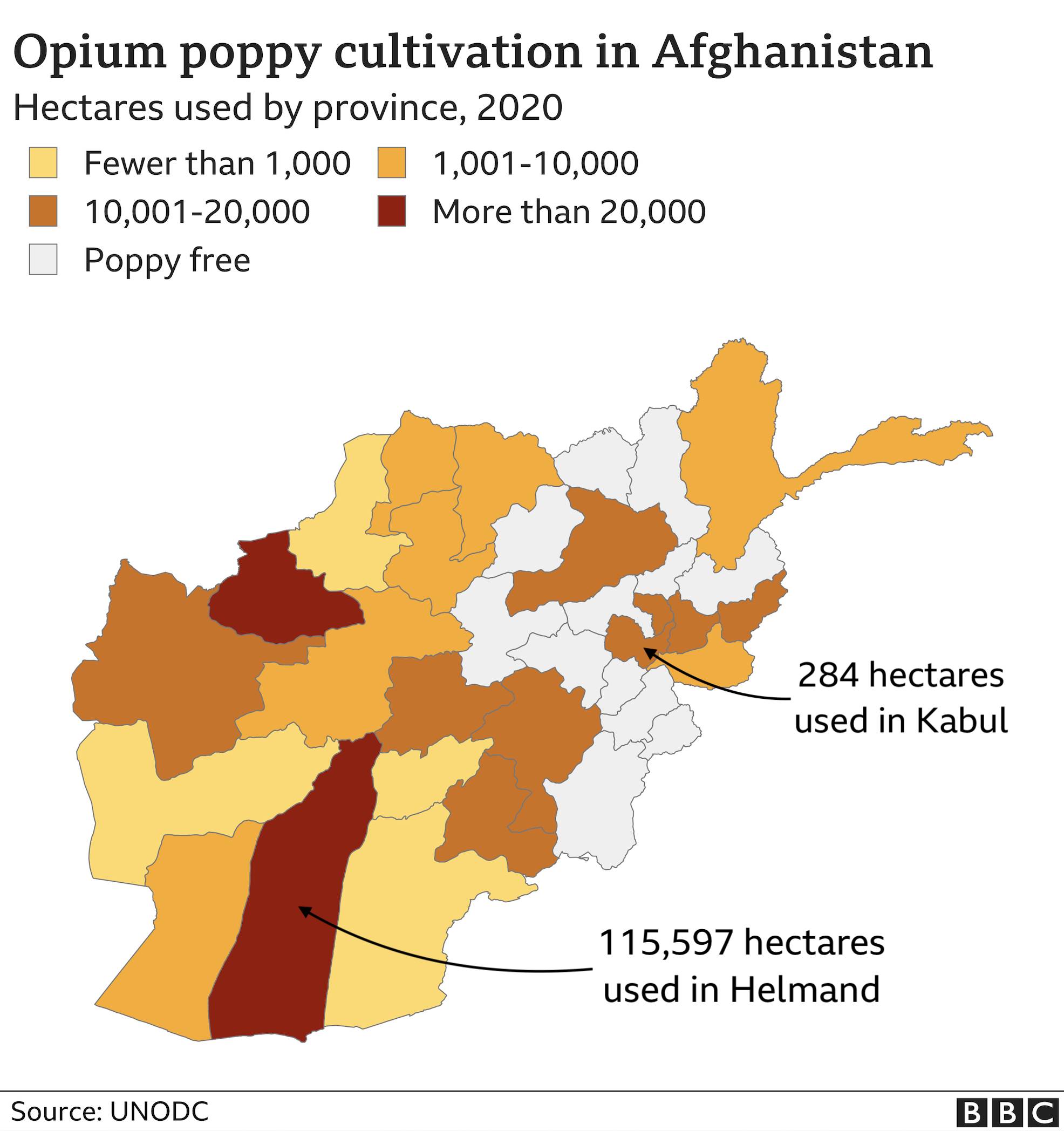
How does the Taliban make money from poppies?
Opium farming is a major source of employment in Afghanistan, and in 2019 opium harvesting provided almost 120,000 jobs, according to the UNODC Afghanistan opium survey.
The Taliban profits through taxes on the opium crop and indirectly through processing and trafficking, the US State Department says. A 10% cultivation tax is reportedly collected from opium farmers.
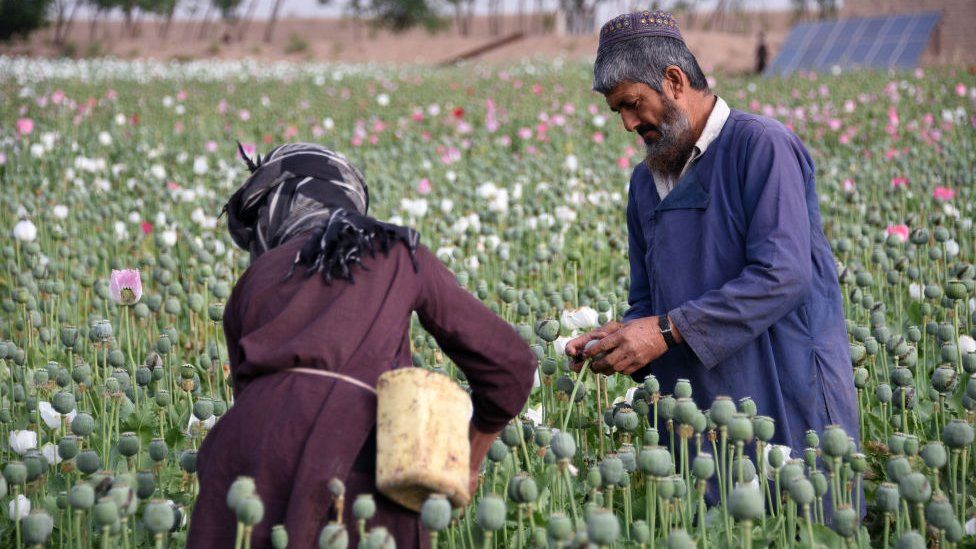
Taxes are also collected from the laboratories converting opium into heroin, as well as the traders who smuggle the illicit drugs.
Estimates of the Taliban’s annual share of the illicit drug economy range from $100m-$400m.
The drug trade accounts for up to 60% of the Taliban’s annual revenue, says US commander General John Nicholson in the Special Inspector General for Afghan Reconstruction (Sigar) report.
But some experts dispute this figure.
David Mansfield, a researcher on the illicit drug trade, says: “The taxation system as described by the UN and others is unrecognizable on the ground – it’s unworkable both administratively and economically.
“The taxes earned on opiates could generate a maximum of $40m per annum.”
Where do the drugs end up?
Heroin made from opium grown in Afghanistan makes up 95% of the market in Europe.
However, only 1% of the US supply of heroin comes from Afghanistan, according to the US Drug Enforcement Agency. Most comes from Mexico.
Between 2017 and 2020, more than 90% of opioids were transported by road.
But there has recently been a rise in seizures at sea, on routes between the Indian Ocean and Europe.
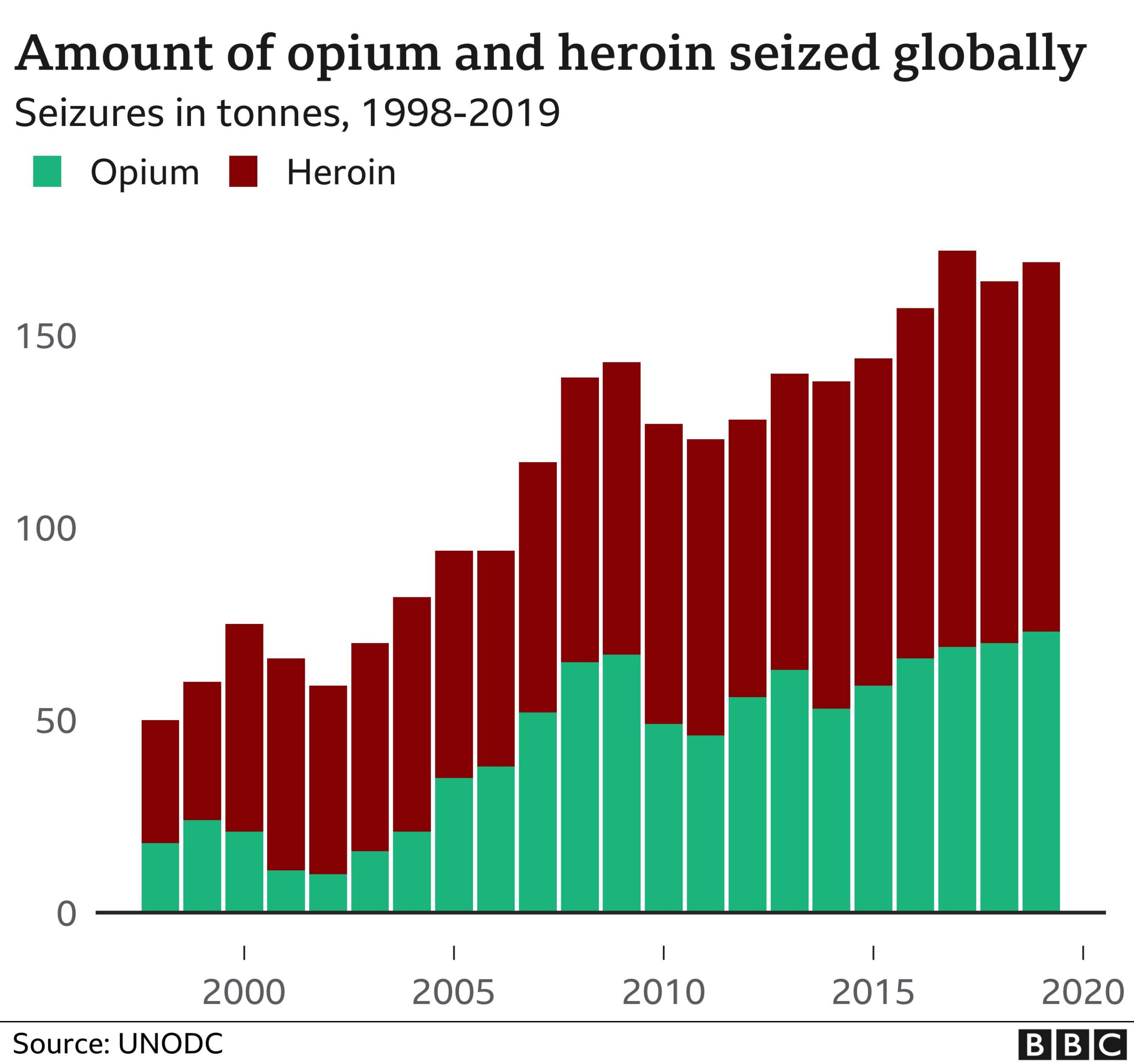
Although there have been fluctuations, opium production and opium-related seizures have shown an upward trend over the last two decades, in line with poppy cultivation in Afghanistan.
Drug seizures and arrests have had minimal impact on the country’s opium poppy cultivation, according to Sigar.
Opium seizures since 2008 were equivalent to just 8% of the opium produced by the country in 2019 alone, it said.
Napomena o autorskim pravima: Dozvoljeno preuzimanje sadržaja isključivo uz navođenje linka prema stranici našeg portala sa koje je sadržaj preuzet. Stavovi izraženi u ovom tekstu autorovi su i ne odražavaju nužno uredničku politiku The Balkantimes Press.
Copyright Notice: It is allowed to download the content only by providing a link to the page of our portal from which the content was downloaded. The views expressed in this text are those of the authors and do not necessarily reflect the editorial policies of The Balkantimes Press.
